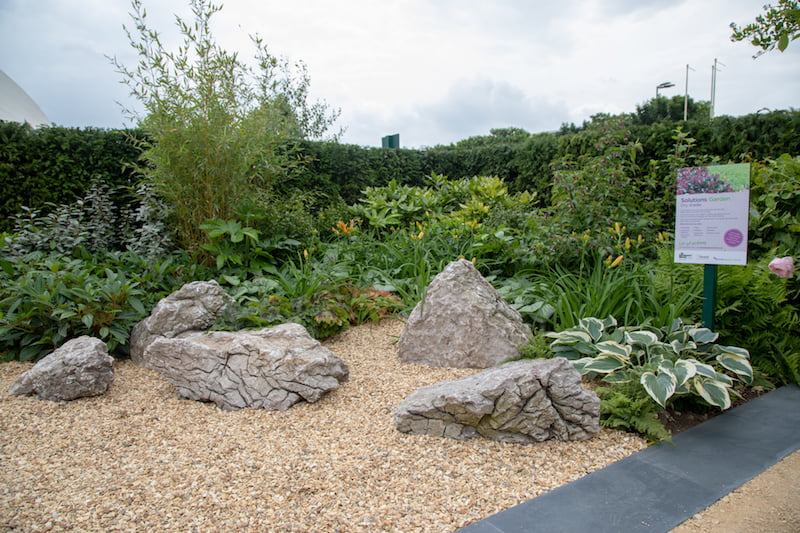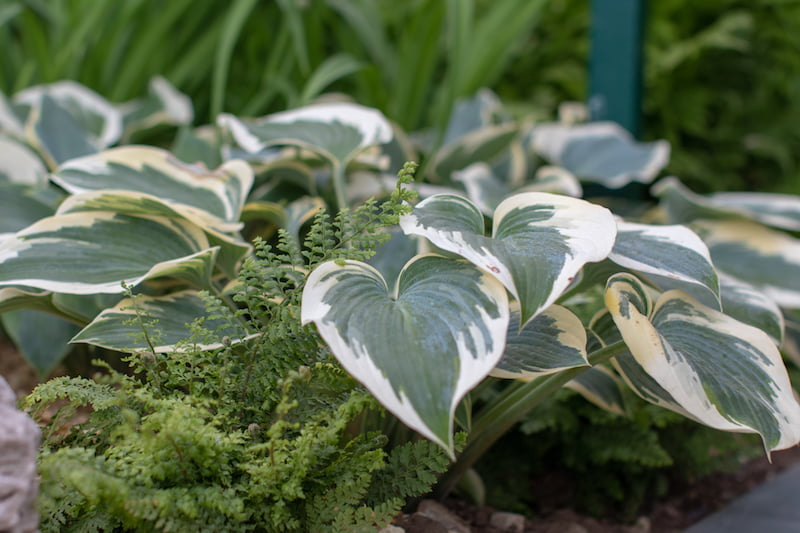When designing the Wyevale Garden Centres ‘Solutions Garden’ at Gardeners’ World Live 2018, which won a Platinum award, the aim was to show panicky planters stylish solutions to some of the UK’s most common gardening problems, including managing shade.
As gardeners we know that changing seasons welcome new problems in the garden, from frosts to heatwaves but one of the most common, trans-seasonal problems for gardeners in the UK ,as well as internationally, is how to manage the shade.

Shade lovers are integral in the Wyevale Garden Centre ‘Solutions Garden’ at Gardeners’ World Live.
Some gardens experience part-shade at different points in the day, while others endure complete shade throughout the day, and gardeners often worry that their plants won’t respond well to a dark environment. However, contrary to popular belief, there are plants that thrive in the shade as long as they are looked after correctly.
There are lots of plants that are happy – and, in fact, do well – in the shade. You can feel confident planting hydrangeas, Choisya, Hypericum, Ribes and Tiarella, and grasses such as Miscanthus and Molinia.
And, if you are looking for plants that do well in dry shade, species such as Fatsia, Skimmia, Viburnum tinus, Sarcococca and Hypericum calycinum are all ideal; as well as perennials such as Anemone japonica, Euphorbia robbiae, many ferns, Alchemilla, hostas and hellebores.

Shade loving hostas and ferns
Top tips for planting in the shade
Complete shade is liveable – Many people think that planting in shade is a problem but soil can retain moisture and provide ideal growing conditions for a wide range of plants.Dry shade – However, dry shade can provide difficult growing conditions for plants. It’s important to add as much organic material, such as homemade leaf mould or compost, to the beds as possible, which will help retain moisture and improve soil condition.Fertilisers – Don’t use high nitrogen fertilisers as you want to promote shade-tolerant plant growth and these fertilisers rely on sunlight, which converts it to food for the plants (photosynthesis). Instead, use sulphate of potash, which has a very high potassium content, or wood ash from a bonfire.Fork out – When you’re planting in the shade, you need to ensure the roots of the new plants go down into cool, moist soil. So, make sure you fork the base of each planting hole.Mulch – When you’ve planted, mulch the area with a layer of homemade leaf mould or rotted garden compost, as this will help it retain moisture, prevent weeds and protect the roots when it’s cold.

Professor David Stevens in the Wyevale Garden Centres ‘Solutions Garden’. It received a Platinum award at Gardeners World Live 2018
